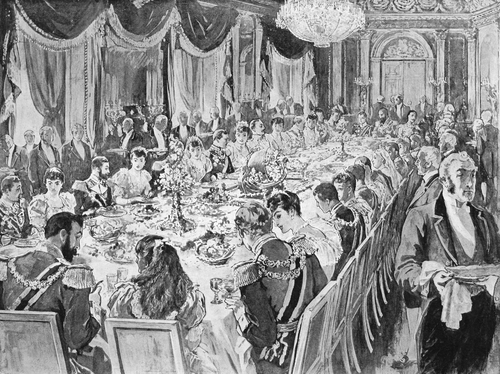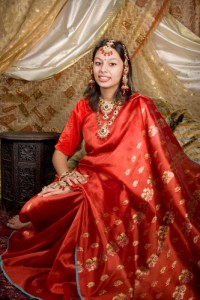The union between a man and woman has always been regarded as a special ceremony to celebrate their love for each other. It wasn’t until the middle ages, however, that weddings became more than just a union between two individuals.
Before the middle ages, the only purpose for a wedding was to celebrate the union of love between two people. During and after the middle ages the significance of a wedding changed completely. Weddings became more of a political ceremony than one to celebrate love, although love between two people is still often the main purpose for a wedding.

The higher purpose that weddings took in the middle ages was to create a union between two families, businesses or even countries. This was particularly the case in upper social classes where the union between two families was significant to the ongoing success of each individual family, such as in the joining of two kingdoms.
As a result of this mental shift on the purpose of a wedding, the dress that a bride would wear became more important. Brides were essentially representing their entire family, or village, and thus had to dress in a manner that positively portrayed their families values and social status.
When most people think of a wedding dress, they imagine a beautiful white dress with a veil. This is not always the case and it largely depends on the religion and culture of the people getting married.
Wedding dresses in western culture
 Phillipa of England was the first documented women to wear a white wedding gown for her wedding in 1406, however, this was not a usual trend until a few centuries later. Brides in those days actually wore whatever colour they preferred. In Scandinavia for example, the most popular colour for a wedding gown was black.
Phillipa of England was the first documented women to wear a white wedding gown for her wedding in 1406, however, this was not a usual trend until a few centuries later. Brides in those days actually wore whatever colour they preferred. In Scandinavia for example, the most popular colour for a wedding gown was black.
The tradition in western culture today is for the bride to wear a white wedding dress. This was made popular in 1840 when Queen Victoria married Albert of Saxe-Coburg and wore a white wedding gown. Her wedding photographs were published and widely viewed by many people resulting in most brides choosing white for their own wedding gowns.
It is a common belief that a white wedding dress was used to symbolize virginity but this is not the case. To symbolize purity, faithfulness and the virgin Mary, the color blue would have been the more appropriate choice
It is more likely that a white wedding dress was a symbol of the brides wealth. The reason for this is that white dresses were only worn by wealthy brides who had the income to buy a dress that they would only wear once because white clothing was very difficult to wash in the 19th century.
Wedding dresses in eastern culture
 In Eastern cultures such as China and India, brides typically choose to wear red wedding dresses to represent good luck and auspiciousness.
In Eastern cultures such as China and India, brides typically choose to wear red wedding dresses to represent good luck and auspiciousness.
In China, sometimes they will opt for a white wedding dress in accordance with western culture but will still wear a ceremonial red gown at the official tea ceremony.
In India, brides wear what is called a wedding sari, which are traditionally red in colour and made out of silk. In recent times brides have started wearing other vibrant colours and using different fabrics than silk but will typically change into the traditional red sari for the main ceremony.

